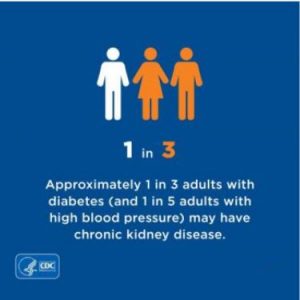Roughly 37 million Americans have chronic kidney disease (CKD) yet nearly 90% don’t know they have the condition. Left untreated, CKD can result in kidney failure and cardiovascular disease. Since early CKD commonly has no symptoms, people often don’t realize they have it until they’re at the point of needing dialysis. To help increase awareness of CKD testing and diagnosis, the global nonprofit organization KDIGO develops evidence-based clinical practice guidelines in kidney disease. Together with PlatformQ Health, the organization is also producing digital education to help patients and providers better manage the condition.
We recently sat down with KDIGO Chief Science Officer Michael Cheung to discuss ways to improve patient outcomes.
Early screening
“CKD is a silent disease,” said Cheung. “There is significant under-recognition that people may have it. That’s really unfortunate because there are effective therapies, ranging from renin-angiotensin system inhibitors to statins. Not only that, there are non-medical measures, such as eating better, lowering salt intake, and exercising more, that can improve both cardiovascular and CKD health.”
KDIGO has been educating patients and providers about the need for early screening for those with CKD risk factors, such as hypertension, diabetes, cardiovascular disease, or a family history of kidney disease. Screening may include a blood test to measure glomerular filtration rate (GFR) to gauge how well the kidneys are filtering blood and a urine test to check for albumin, a protein that passes to the urine when the kidneys are damaged. If a CKD diagnosis is confirmed, it’s necessary to monitor progression and to apply appropriate therapies to slow its progression.
The need for multidisciplinary care
Early screening is just the first hurdle in addressing the preponderance of CKD. Numerous organizations have sounded the alarm about the scarcity of nephrologists to treat the volume of patients with the disease. This shortage leads to many people at risk of CKD or who have CKD being seen by primary care physicians or specialists such as endocrinologists or cardiologists. “It is therefore critical to educate other specialties about nephrology issues, and to maintain an open dialogue so they can provide proper care for these patients,” said Cheung.
To that end, KDIGO disseminates its kidney disease prevention and management guidelines far and wide. In addition to publishing guideline synopses in the Annals of Internal Medicine, the organization partnered with the American Diabetes Association as well as cardiology societies such as the European Society of Cardiology, the European Society of Hypertension, and the American Heart Association to educate those caring for patients with diabetes and hypertension about the risks of CKD and cardiovascular health. The organization also publishes special guidelines on topics such as diabetes in CKD, blood pressure management in CKD, and lipids in CKD to support physicians treating patients with multiple comorbidities.
Breaking down silos
 People who have diabetes or high blood pressure are at increased risk of developing CKD. It’s important for health care providers who see those at risk of CKD or who may have undetected CKD to work together with nephrologists, but the reality is that health care providers – particularly in the U.S. – often don’t coordinate care with other doctors.
People who have diabetes or high blood pressure are at increased risk of developing CKD. It’s important for health care providers who see those at risk of CKD or who may have undetected CKD to work together with nephrologists, but the reality is that health care providers – particularly in the U.S. – often don’t coordinate care with other doctors.
“Healthcare is very fragmented,” Cheung said. “There’s a need to treat these patients more holistically, taking into consideration multiple organ protections, so that a cardiologist, for example, isn’t just protecting the heart. They’re looking at the patient as a whole. With the trend toward more multidisciplinary care, we can address multiple facets of organ protection.”
“The earlier you can intercept CKD, the better you can mitigate cardiovascular risk and reduce the risk of kidney failure, which will reduce the need for dialysis or a kidney transplant,” said Cheung. “It’s a simple paradigm but it’s something that’s often overlooked, due to siloed care where one specialist won’t touch anything related to another area. We need to overcome these barriers to improve management of these patients.”
Early intervention is possible
“The good news is that there are therapies that address different underlying etiologies,” said Cheung. “This includes medications for everything from managing blood glucose, blood pressure, and lipids to improving cardiovascular and kidney outcomes.” However, many of these drugs are underutilized. “The kidney benefits of ACE inhibitors and angiotensin receptor blockers have been recognized for more than 20 years and yet these medications are still not yet widely adopted,” Cheung said. “Many generalists and specialists outside of nephrology need education about the benefits of these drugs.”
Patient education is also crucial. “When we empower patients to stay informed and active in their care, they receive better care and often report a better quality of life,” Cheung said. “People with diabetes are a prime example of those who are likely to take charge of their care. When it’s managed well, patients can have a long life ahead of them. The same can be said for people with CKD.”
Working together, KDIGO and PlatformQ Health are giving patients and providers the educational tools to help improve the lives of those with CKD.
Contact digital@platformq.com to learn more.

